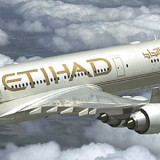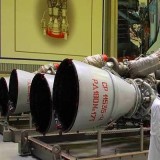Ranked: Top 10 fastest fighter jets in the world in 2025

When it comes to aerial combat, speed counts. Whether it’s an air superiority fighter designed to dominate the aerial battlefield, an interceptor optimized for climb, or a long-range multirole aircraft, rapidly getting into the action is crucial.
On paper, the fastest fighter jet of 2025 is the Mikoyan Gurevich MiG-25, which sets a pace of Mach 2.83. It is followed by its sistership, the MiG-31. But both these types are almost obsolete, with just a quartet of MiG-25s recorded as being in service.
In terms of widely-used, theater-ready fighter jets, the F-15 Eagle takes the crown. Over 900 are in service, and the type is still being modernized, with its latest iteration, the F-15EX, designed to fly even faster.
The top 10 fastest fighter jets ranked
RankAircraftMax speed (Mach)Max speed (mph)Max altitude (service ceiling)1Mikoyan-Gurevich MiG-25Mach 2.831,900 mph80,000 ft2Mikoyan-Gurevich MiG-31Mach 2.831,900 mph67,000 ft3McDonnell Douglas F-15 EagleMach 2.51,650 mph60,000 ft4Sukhoi Su-27 familyMach 2.351,600 mph59,000 ft5Mikoyan-Gurevich MiG-23Mach 2.351,553 mph60,000 ft6Grumman F-14 TomcatMach 2.31,544 mph55,000 ft7Mikoyan MiG-29Mach 2.31,520 mph59,000 ft8IAI KfirMach 2.31,520 mph58,000 ft9Lockheed Martin F-22 RaptorMach 2.251,500 mph65,000 ft10McDonnell Douglas F-4 Phantom IIMach 2.231,470 mph62,000 ftUSAFHow the top speed of fighter jets is measured
When considering the speed of an aircraft, the maximum speed is not always reflective of how it would perform in real-world situations. The speeds reported in this list have been achieved with test aircraft in clean configurations (carrying no weapons or external fuel tanks). These tests show what the aircraft is capable of. However, in their day-to-day operations, the jets tend to fly significantly slower.
The top speeds are also usually measured at an optimal altitude, typically above 30,000 ft (9,000 m), and many of the aircraft mentioned are much slower when flying at lower altitudes.
We count down the world’s fastest fighter jets and give more detail on each.
10. McDonnell Douglas F-4 Phantom II
Mach 2.23 (2,370 kph / 1,470 mph / 1,280 kts at 40,000 ft / 12,000 m)
F-4 Phantom II specificationsCrew2Manufactuered1958 – 1981Number built5,195Combat range370 nmi (420 mi, 680 km)Ferry range1,457 nmi (1,677 mi, 2,699 km)The F-4 Phantom is one of the most famous Cold War jets. While it has been retired by most of its operators, the air forces of Turkey, Greece, and Iran still fly the aircraft, according to the 2025 World Air Forces directory. South Korea retired the last of its F-4E Phantoms in 2024.
Notable for its un-aerodynamic shape, the F-4 can reach high speeds thanks to the raw power of General Electric J79 engines, invoking a saying popular among Phantom pilots and fans alike – “A brick can fly if you stick a big enough engine on it.”
USAFFamously, the F-4 was designed without an internal gun, as intelligence at the time decreed that close combat dogfights were over and that the aircraft’s primary role would be as a fleet defense fighter. Air-to-air guided missiles were thought to have made guns obsolete, as the Phantom could shoot down bombers from beyond visual range and use heat-seeking sidewinder missiles closer in.
However, as air-to-air combat evolved and the importance of dogfighting became clear, the F-4 was modified to include an external gun pod. Guns could be fitted to any of its hardpoints, meaning – theoretically – it could carry up to five, although none ever did.
RELATED
Exploring the legacy of the F4 Phantom: history and notable features
9. Lockheed Martin F-22 Raptor
Mach 2.25 (2,414 kph / 1,500 mph / 1,303 kts at 40,000 ft / 12,000 m)
F-22 specificationsCrew1Manufactured1996 – 2001Number built195Combat range460 nmi (530 mi, 850 km) clean with 100 nmi (115 mi; 185 km) in supercruiseFerry range1,740 nmi (2,000 mi, 3,220 km)The F-22 Raptor is the first 5th generation fighter and the only stealth aircraft to be included on this list. Fewer than 200 Raptors have ever been made, and the type has never been exported. The US Air Force (USAF) remains its only operator.
USAFDespite being very fast at high altitudes, many of the older jets on this list can barely break the sound barrier while flying low. But the F-22 is different: it can fly faster than Mach 1.2 at sea level and reach high speeds even with full armament, which does not cause additional drag due to being stored in internal weapons bays.
The Raptor also boasts the ability to supercruise, reaching more than Mach 1.8 without using afterburners. Supercruise leads to greater fuel economy and longer ranges, as afterburners are very fuel-hungry.
RELATED
Video shows USAF F-22 Raptor tire blowout during takeoff at Kadena
8. IAI Kfir
Mach 2.3 (2,440 kph / 1,520 mph / 1,320 kts at 36,000 ft / 11,000 m)
Kfir specificationsCrew1Manufactured1976 – 1986Number built220Combat range1,000 or 670 km (620 or 420 mi, 540 or 360 nmi) depending on configurationFerry range1,300 km (808 mi, 1,130 nmi)The Kfir is an Israeli upgrade to the Dassault Mirage 5 and is currently operated only by Colombia and the tactical flight training arm of Textron, Airborne Tactical Advantage Company (ATAC).
Its numerous upgrades include the General Electric J79-J1E turbojet engine, which is considerably more powerful than the Mirage 5’s original SNECMA Atar 9C.
USAFThere are some conflicting reports that indicate that the Kfir’s top speed is a more modest Mach 2. Furthermore, since the existing Kfir airframes are quite old, there is a chance that the aircraft can no longer achieve these speeds.
However, much of the available information indicates that the Kfir’s top speed is Mach 2.3. It also suggests that the model has likely reached this speed in the past, which is why AeroTime has included the aircraft in its ranking.
7. Mikoyan MiG-29
Mach 2.3 (2,450 kph / 1,520 mph / 1,320 kts at 36,000 ft / 11,000 m)
MiG-29 specificationsCrew1Manufactured1981 – presentNumber built1,600 +Combat range700–900 km (430–560 mi, 380–490 nmi)Ferry range2,100 km (1,300 mi, 1,100 nmi)Designed in the Soviet Union as a lighter counterpart to the Sukhoi Su-27 and a response to the F-16, the MiG-29 has been widely exported and is currently in the inventory of Russia, Ukraine, North Korea, Poland, India, and many other countries.
IanC66 ShutterstockDespite often being described as a rival to the F-16, the MiG-29 mainly performed the role of point-defense interceptor and, as such, had a relatively small range and high speed.
The aircraft has some limitations; for example, it can’t go supersonic while carrying a fuel tank. Nevertheless, a clean MiG-29 is said to be capable of reaching Mach 1.2 at sea level.
Nicknamed ‘Fulcrum,’ the MiG-29 is known for its incredible maneuverability, delivered in part thanks to its widely spaced engines. It’s the fifth most widely used fighter jet in service, with 788 active examples identified in the 2025 World Air Forces directory.
RELATED
Pilot narrowly escapes as IAF MiG-29 fighter enters freefall before crash: video
6. Grumman F-14 Tomcat
Mach 2.3 (2,485 kph / 1,544 mph / 1,342 kts at 40,000 ft / 12,000 m)
F-14 specificationsCrew2Manufactured1969 – 1991Number built712Combat range503 nmi (579 mi, 932 km) fighter escort204 nmi (235 mi; 378 km) deck launched intercept150 nmi (170 mi; 280 km) fleet air defense Ferry range1,600 nmi (1,800 mi, 3,000 km)The F-14 is considered to be the world’s first 4th generation fighter jet, designed primarily as a fighter for the US Navy. Retired by the Navy in favor of the F/A-18, the F-14 is currently operated by only the Islamic Republic of Iran Air Force, which has 41 in service, according to the 2025 World Air Forces directory.
WikimediaKnown as the ‘Tomcat,’ the F-14 is a carrier-capable twin-engine supersonic fighter jet with a variable-sweep wing design. It first deployed with the US Navy in 1974 aboard the USS Enterprise as a replacement for the F-4 Phantom II and was retired by the US Navy on September 22, 2006.
During the Iran-Iraq war, Iran claimed its F-14s shot down at least 160 Iraqi aircraft while only 16 Tomcats were lost (seven of those in accidents). Although Iran maintains a fleet of 41, it’s likely many of these are not combat-ready due to sanctions creating a lack of spare parts.
In active duty, Tomcat pilots report regularly reaching the advertised speed of Mach 2.3, even fully loaded. It is suggested that a clean F-14 could reach even higher speeds, and pilots loved pushing it to the limit. Dave Andersen, a former F-14 Tomcat Radar Intercept Officer for the US Navy, wrote on Quora:
“That jet accelerated like it was blasted out of a cannon. In maybe 50 seconds we went from about 400 knots and reached the advertised top speed of Mach 2.34, and the jet was still accelerating. I’m sure she would’ve gone past 2.5 Mach if we’d let her, but backed off at that point because we were getting close to “bingo” fuel state.”
RELATED
Top 10 oldest fighter jets still in service
5. Mikoyan-Gurevich MiG-23
Mach 2.35 (2,499 kph / 1,1553 mph / 1,349 kts at 36,000 ft / 11,000 m)
MiG-23 specificationsCrew1Manufactured1967 – 1985Number built5,047Combat range1,450 km (900 mi, 780 nmi)Ferry range2,360 km (1,470 mi, 1,270 nmi) Another swing-wing fighter, the MiG-23 was designed in the early 1960s and is still operated by North Korea, Syria, Kazakhstan, Libya and several African nations. According to the 2025 World Air Forces directory, 187 remain in service around the world.
WikimediaBuilt as an interceptor, the MiG-23 is far less maneuverable than newer 4th generation jets and has relatively poor low-altitude performance. Nevertheless, it was an extremely sophisticated jet for the late 60s and remains one of the most iconic Soviet aircraft of the Cold War.
Known as the ‘Flogger,’ the MiG-23’s variable wing sweep makes it capable of taking off from short, remote runways, as well as optimizing its aerodynamic profile for supersonic or cruise flight. Its advanced radar and fire control systems allow it to target enemies well beyond visual range.
4. Sukhoi Su-27
Mach 2.35 (2,500 kph / 1,600 mph / 1,300 kts at 36,000 ft / 11,000 m)
Su-27 specificationsCrew1Manufactured1982 – 2010Number built680Combat range2,800 km (1,740 mi, 1,510 nm)Ferry range3,720 km (2,300 mi, 2,010 nm) (Su-27S)The Su-27 was one of the most prolific late-Cold War jets, giving rise to an entire family of aircraft that includes the Su-30, the Su-34, the Su-35, the J-11, and the J-16, among others.
It is one of the most widely operated aircraft in the world. A number of models, derived from the Su-27, have often been described as having top speeds between Mach 2 and Mach 2.35, although the most recent variants are unlikely to be as fast. Check out the section at the end of this list to find out why.
AMMHPhotography ShutterstockUnlike some other 4th generation jets, the Su-27 can’t reach Mach 1.2 at sea level, and with external ordinance, its top speed is also significantly lower. However, it was not intended to work as a dedicated interceptor, and high speeds at a high altitude are more of a byproduct of this aircraft’s powerful engines, designed to give it high payload capacity and acceleration.
As a family, the Su-27/30/34/35 family is the second most prominent in-service fighter jet type in the world for 2025, second only to the F-16. The 2025 World Air Forces directory lists 1,284 as in service, with major operators including China, India, and Russia.
RELATED
Combat readiness tested: Russian Su-27 jets conduct drills over Baltic Sea
3. McDonnell Douglas F-15 Eagle
Mach 2.5 (2,655 kph / 1,650 mph / 1,434 kts at 40,000 ft / 12,000 m)
F-15 specificationsCrew1Manufactured1972 – 1997Number built1,198Combat range1,085 km (674 mi, 586 nmi)Ferry range5,600 km (3,500 mi, 3,000 nmi) with conformal fuel tanks and three external fuel tanksProbably one of the most well-known US-made aircraft, the F-15 is operated by the USAF, Israel, Japan, Qatar, South Korea, Saudi Arabia and Singapore. It’s the third most widely-used fighter jet in the world, with the 2025 World Air Forces directory listing 919 in service.
USAFThe jet was developed as a response to the MiG-25 interceptor (which makes an appearance later in this list). While the Eagle is slightly slower than the aircraft it was designed to rival, the US jet makes up for this by also having tremendous low-speed maneuverability.
It is also the only fighter jet to ever shoot down a space satellite, and the only one to experience no air-to-air losses while scoring over 100 aerial victories.
Despite the base model being more than 50 years old, the F-15 is still in production as the vastly upgraded F-15EX, also known as the F-15 Eagle II.
RELATED
Boeing wins $450.5M contract for Japan’s F-15 Super Interceptor upgrades
2. Mikoyan MiG-31
Mach 2.83 (3,000 kph / 1,900 mph / 1,600 kts at 70,538 ft / 21,500 m)
MiG-31 specificationsCrew2Manufactured1975 – 1994Number built519Combat range1,450 km (900 mi, 780 nmi)Ferry range3,000 km (1,900 mi, 1,600 nmi) with 4 × R-33E and 2 drop tanksThe MiG-31 was based on the legendary MiG-25 and was also intended to replace it. The performance of the two aircraft is similar, except for the fact that the MiG-31 has superior sensors, electronics, and armament.
The MiG-31 was retired by Kazakhstan in 2024, leaving only Russia operating the type. The Russian Air Force has 128 active examples in service, according to the 2025 World Air Forces directory.
WikimediaThe MiG-31 was initially designed to be more adaptable than the MiG-25. It offered several variants, including a multirole fighter, a bomber, and a reconnaissance aircraft. These variants were later scrapped but plans to produce them still resulted in the MiG-31 having decent low-level performance. The aircraft can reach Mach 1.25 at sea level, something earlier interceptors were incapable of doing.
However, despite many modernizations, the aircraft does have problems that severely limit its speed. During parliamentary hearings in 2013, Victor Bondarev, head of the Russian Aerospace Forces, explained that the MiG-31’s new cockpit glass, which provides better visibility, has also limited the aircraft’s speed to Mach 1.5.
“Those 2.83 Mach that this plane produced are limited; it no longer flies at 2.83 Mach, it flies at only 1.5 Mach, for one simple reason – the glass can’t handle it. It turns out that we can’t produce glass in Russia.”
But the jet does not need to rely on speed alone due to its vastly expanded modern armament, which includes the Kinzhal hypersonic missile.
1. Mikoyan-Gurevich MiG-25
Mach 2.83 (3,000 kph / 1,900 mph / 1,600 kts at 70,538 ft / 21,500 m)
MiG-25 specificationsCrew1Manufactured1964 – 1984Number built1,186Combat range1,630 km (1,013 mi) at Mach 2.35Ferry range2,575 km (1,600 mi, 1,390 nmi)Designed in the late 1960s, the MiG-25 – codename ‘Foxbat’ – was arguably the most feared fighter jet of the Cold War, and is responsible for the US scrambling to develop the F-15. However, whether the MiG-25 can be considered operational is debatable.
WikimediaRetired in almost all countries that had it, the MiG-25 officially remains in the arsenal of just two countries. According to the 2025 World Air Forces directory, just four remain active – two in Syria and two in Libya. It’s unlikely any of these four jets are combat-ready.
However, at least theoretically, the MiG-25 remains the world’s fastest fighter jet. It broke numerous records and reached speeds achieved by no other airbreathing jet except for the SR-71 and its derivatives.
The MiG-25 was designed first and foremost as a high-altitude interceptor. Just like many other aircraft of this type, it had poor maneuverability and could not break the sound barrier at sea level while carrying missiles.
RELATED
The Soviet era’s fastest plane: the Mikoyan-Gurevich MiG-25
The fastest-deployed fighter jet
The MiG-25 can, in practical terms, be considered retired. The MiG-31, only used in Russia, has its speed hobbled by the cockpit glass. As such, when considering deployed aircraft in active service, the F-15 is the fastest fighter jet.
USAFIts latest variant, the F-15EX, is even faster. In early 2024, Aviation Week quoted Boeing’s Rob Novotny, a former Air Force F-15 test pilot and now the executive director of F-15 Business Development as saying a clean F-15EX would be able to fly at Mach 2.9. However, this is a theoretical maximum and has not been publicly demonstrated in any tests.
According to The War Zone, a Boeing spokesperson clarified that the fastest the F-15EX had flown in tests, with clean configuration, was Mach 2.497. With twin General Electric F110-GE-129 engines developing 29,500 pounds of thrust each in full afterburner, the airframe and powerplants are more than capable of Mach 2.5 plus; however, the paintwork and antennas probably wouldn’t survive, and the fuel would reach bingo in seconds.
BoeingNevertheless, the continual upgrading of the F-15 has seen this fifty-year-old airframe go from strength to strength, keeping it highly relevant even today.
RELATED
McDonnell Douglas F-15 Eagle: the most fearsome US fighter jet
Why aren’t fighter jets being designed to fly faster?
You may have noticed that most jets on this list are rather old. Meanwhile, the latest generation, except for the F-22, is rarely reported as capable of reaching even Mach 2.
Fast speeds have long stopped being a subject of bragging rights for aircraft manufacturers, and the newest aircraft are indeed, on average, significantly slower than their predecessors. This is because speed stopped being as important in air combat and was sacrificed in favor of maneuverability, stealth, and fuel efficiency, among other factors.
USAFStudies have shown that fighters rarely reach speeds of more than Mach 1.2 during real air combat. Higher speeds are only important for long-range interceptions, a role that the top aircraft on this list, the F-15 and the MiG-31, are designed to fulfill.
New medium- and long-range missiles further the speed advantage. As a result, Cold War-era interceptors remain the fastest jets ever designed, and the latest aircraft are, in comparison, very slow. Even the forthcoming sixth-generation fighters are projected to have maximum speeds of Mach 2.2 – 2.5. They really “don’t make them like they used to.”
Honorary mentions: Mach 2.05-2.2 fighters
While some of the most popular aircraft can reach speeds slightly higher than Mach 2, this is not enough to make the cut for our list. These aircraft include:
General Dynamics F-16 Fighting Falcon
Mikoyan-Gurevich Mig-21
Dassault Mirage 2000
Dassault Mirage F1
Honorary mentions: Mach 2 fighters
A lot of the jets currently in service have a top speed of Mach 2 (between 2,100-2,200 kph / 1,300-1,360 mph / 1,100-1,150 knots). These include:
Saab JAS 39 Gripen
Eurofighter Typhoon
Chengdu J-20
Sukhoi Su-57
The post Ranked: Top 10 fastest fighter jets in the world in 2025 appeared first on AeroTime.
When it comes to aerial combat, speed counts. Whether it’s an air superiority fighter designed to dominate the…
The post Ranked: Top 10 fastest fighter jets in the world in 2025 appeared first on AeroTime.






